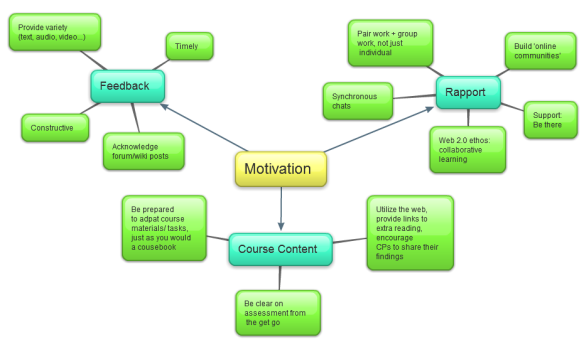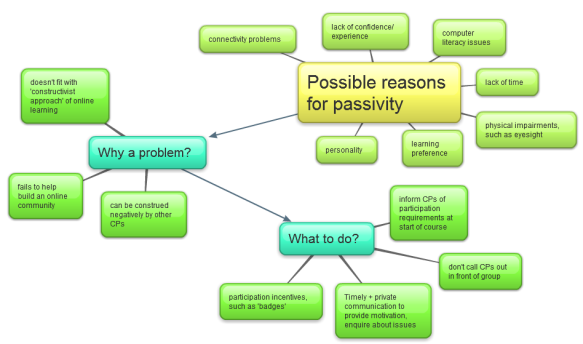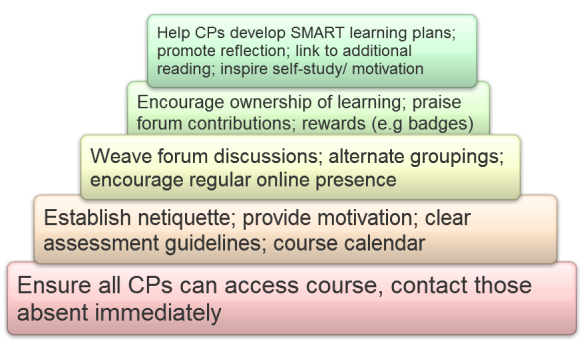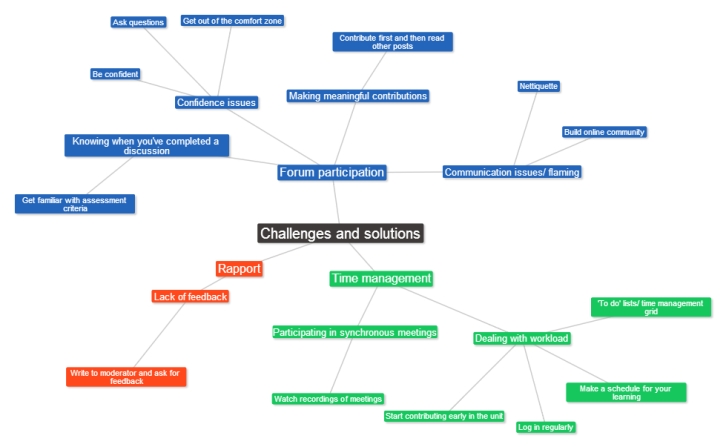Having seen the value an online component can bring to learning, I was ready to delve further into emoderation. Week 2 explored some areas we are all familiar with as a face-to-face trainers:
- Motivation
- Dealing with passive learners
- Learner Needs
- Challenges
…but how might they differ in the online envirnoment?
Motivation: We boiled this down to three key areas: rapport, course content and feedback. We figured if we get it right there, we increase motivation across the board.
We did, however, talk about exceptions, such as course, like ProELT, where CPs are not all present by choice. In such scenarios we may need to work harder to provide clear links between the course and their job, and provide some immediate ‘take-homes’. An example of this would be a providing teachers with activities/ websites they could use to motivate their own learners.




